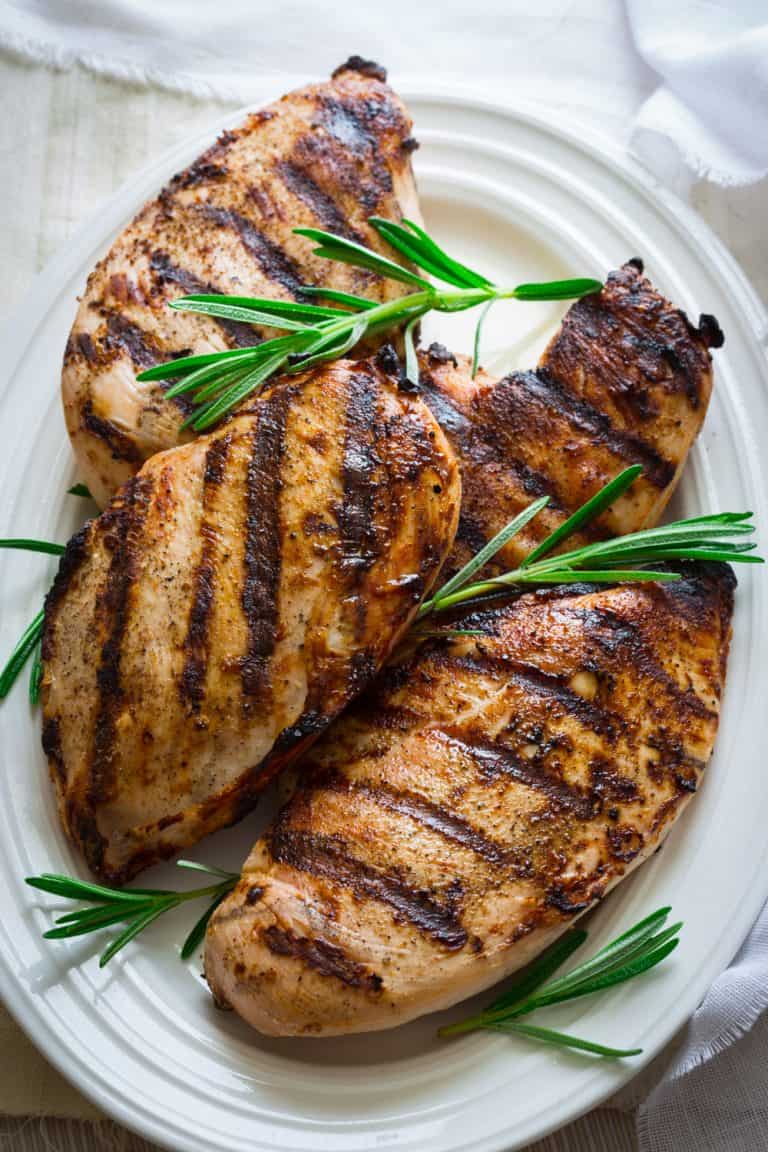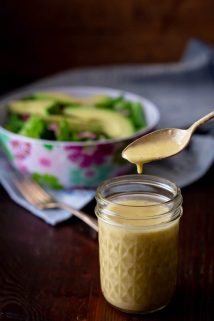How to Thaw Chicken Safely
Stop! Don’t leave that container of frozen chicken out on the counter! Read this first and learn how to thaw chicken safely. I have three alternative ways to thaw chicken.
Table of contents
I remember clearly seeing a styrofoam container of chicken thawing on the counter many times a month throughout my childhood, and I have lived to tell the tale, but I would ask beg of you to not use this method for thawing your chicken. There are three alternatives that are safe and effective and won’t put you or your family at risk of foodborne illness!

The Two Most Important Factors in Food Safety
In culinary school we had to take a very serious standardized test all about food safety. We studied hard. I aced it (yep, totally bragging here.) There were a ton of factors and numbers and details to remember, that was almost 20 years ago, so I don’t know them all by heart anymore, but when it all comes down to it there are two really important things to know to prevent foodborne illness:
1. Temperature Danger Zone
Be wary of the Temperature Danger Zone.The temperature danger zone is any temperature between 40 degrees and 140 degrees F. That means it’s important to store food below the temperature danger zone (in the fridge or freezer) and to cook it all the way through or to a safe internal temperature.
And don’t leave raw or cooked food in the temperature danger zone for too long. The temperature danger zone is only a danger when the food is left in it for an extended period of time. More on both of those below.
2. Cross-Contamination
Don’t spread pathogens by cross contamination or by touching infected raw foods and then other surfaces or foods. You can read more tips about avoiding cross-contamination here.

Is it Okay to Thaw Chicken On The Counter
- in a word, NO!
- As I said, the temperature danger zone is any temperature between 40 degrees and 140 degrees F. Obviously room temperatures (or counter temperature) fall well within this range. At temperatures within the temperature danger zone, bacteria on food can multiply to levels that can cause foodborne illness. In other words, humans are happy and comfortable at room temperature, and so are bacteria and foodborne pathogens!
- To prevent the bacteria from multiplying keeping the raw chicken cold will prevent or slow the multiplication of the pathogens.
- An additional factor is that the amount of time it takes to thaw chicken on the counter. A safe rule of thumb is to limit the time that food is in the temperature danger zone to a maximum of 4 hours. However, that includes any time it is in the danger zone (including the time the meat department handles the chicken at the store, or an employee takes to puts the chicken in the case, when you put it into your cart at the grocery store and then shop and check out, in the car on the way home, while you are putting groceries away, and when it is being prepared before cooking. Not to mention the time it takes to bring the food to temp while it is being cooked or cooled.) So really, since you don’t know how long it was in the Temperature Danger Zone before you got it, you should really count on two hours!
How To Thaw Chicken Safely

Refrigerator Thawing Method
This is the safest and most reliable method for defrosting and the one I recommend. Place a baking dish on the bottom shelf of the refrigerator. Set wrapped chicken in the baking dish and keep cold until it is defrosted and ready to cook. Ideally you would not store anything raw underneath the chicken, but that is not always possible, so using a container to catch any drips is very important.
This process takes about 1 1/2 days per pound of chicken.

How to Quickly Thaw Chicken In Water
This is a fast way to thaw chicken and preferable to the microwave method (see below.)
If your chicken is not in its original packaging with plastic over it, transfer it to a resealable bag, and press all of the air out so the chicken has maximum contact with the bag. I recommend taking it out of styrofoam trays as they insulate the chicken and prevent it from thawing.
Place a large bowl or baking dish (deeper than your package of chicken) in the sink. Place the chicken in the container and set faucet over the container. Turn faucet on cold and allow to fill the container. Once it is full, turn faucet to the lowest drizzle, and let drip into the bowl continuously until the chicken is thawed, about 30 minutes for 1 pound.
Check in and flip chicken over regularly to make sure it is in good contact with the water. Alternatively, turn water off, and refresh it every 15 minutes or so. This process may take up to 1 hour, depending on how thick and closely packed the pieces of chicken are. Cook immediately.

How to Quickly Thaw Chicken In the Microwave
Weigh your chicken. Transfer uncovered to a microwave safe plate or dish. Cover with a paper towel or sheet of parchment. Set on “defrost” setting and input weight. Start microwave. Turn the chicken over every so often, when prompted by the microwave alarm to ensure the most even defrosting. Note in almost all cases, when defrosting with the microwave, the chicken will be partially cooked through in thinner spots and along the surface, so this technique should only be used as a last resort, and for recipes where there is no searing step.

Once the Chicken is Thawed How Do I Cook it To a Safe Temperature
- It is important to cook chicken to a minimum internal temperature of 165 degrees. The safest and most foolproof way to determine the temperature is to use a good quality digital instant read thermometer.
- When “temping” chicken, make sure to insert the sensor of the thermometer into the thickest part of the chicken.
- For a whole chicken, check the area deep in the thigh meat, near the bone.
- Always check the temperature of the cooked chicken in several locations and use the lowest number to determine doneness.
For More Tips on How to Prepare Chicken without Cross Contamination Read here.
Now that you have thawed chicken, here are
17 Healthy Chicken Recipes To Try
- Greek Marinated Grilled Boneless Skinless Chicken Thighs
- Healthy Chicken Divan
- Sheet Pan Balsamic Chicken
- Healthy Chicken a la King
- Chicken Cashew and Cabbage Stir-fry with Honey Sriracha Sauce
- 5 Ingredient Honey Mustard Chicken Thighs
- Slow Cooker Chicken Cacciatore
- Slow Cooker Chicken Tortilla Soup
- Chicken Fajita Salad
- Garlic Herb Marinated Chicken
- Garlic Lemon Marinated Chicken
- Isabel’s Island Chicken Marinade
- Sheet Pan Chicken and Broccoli Supper with Honey Sriracha Sauce
- Maple Teriyaki Marinated Chicken
- Thai Chicken Coconut Soup
- Maple Barbecue Grilled Chicken
- Chicken and Broccoli Stir-fry with Maple Tahini Sauce
Thanks so much for reading! If you are new here, you may want to sign up for my email newsletter to get a free weekly menu plan and the latest recipes right to your inbox. If you make this recipe, please come back and leave a star rating and review. I would love to hear what you thought!
Happy Cooking! ~Katie

















These are such great tips! Very informative!
Thank you so much Tisha. Glad you stopped by.
Thanks for sharing this post, super important tips to know! Thawing food in the temperature danger zone can be a risky thing, everyone should know the correct way to thaw chicken, let alone any foods!
Hi Kristina. I knew I could count on a RD to back me up on this. Thanks! Yes it takes more time than the counter, but why risk it!
I got food poisoning in October that landed me in the ER for several hours. It’s truly a horrible thing. It wasn’t from chicken, but this is such an important post. My mother always defrosted her chicken (and everything else) on the counter, but you’re absolutely correct that this is risky!
I’ve had it too. Its the worst! So glad you’re okay now.
Such valuable tips for an item that most of us cook every week! Thank you!
I am glad to hear you find it useful. That was my goal.
I always struggle to defrost meat – usually because I forget to do it early! Thank you for all of those super helpful tips; it is so important to do things properly and most importantly – safely!
Next time that happens, you’ll know what to do!